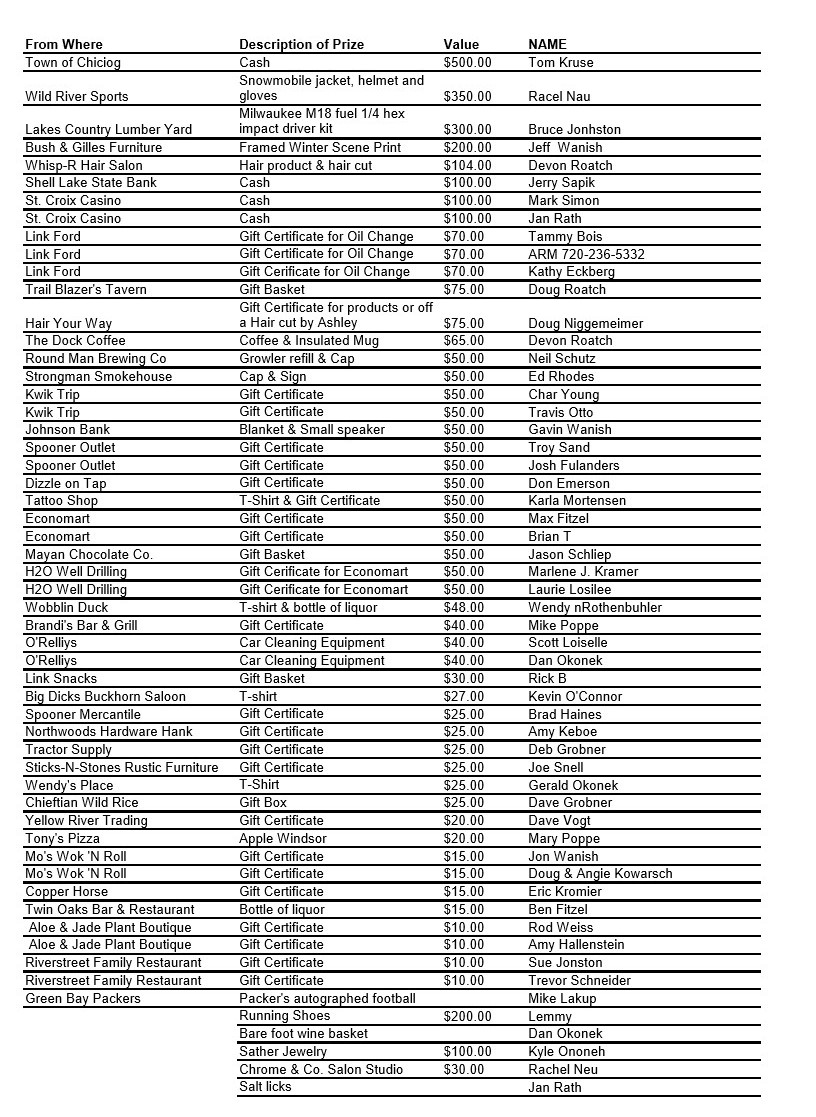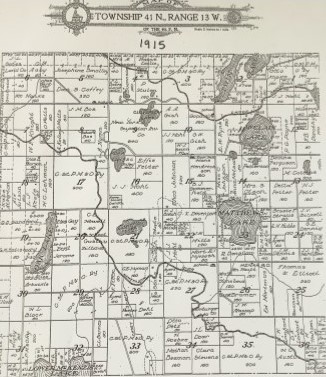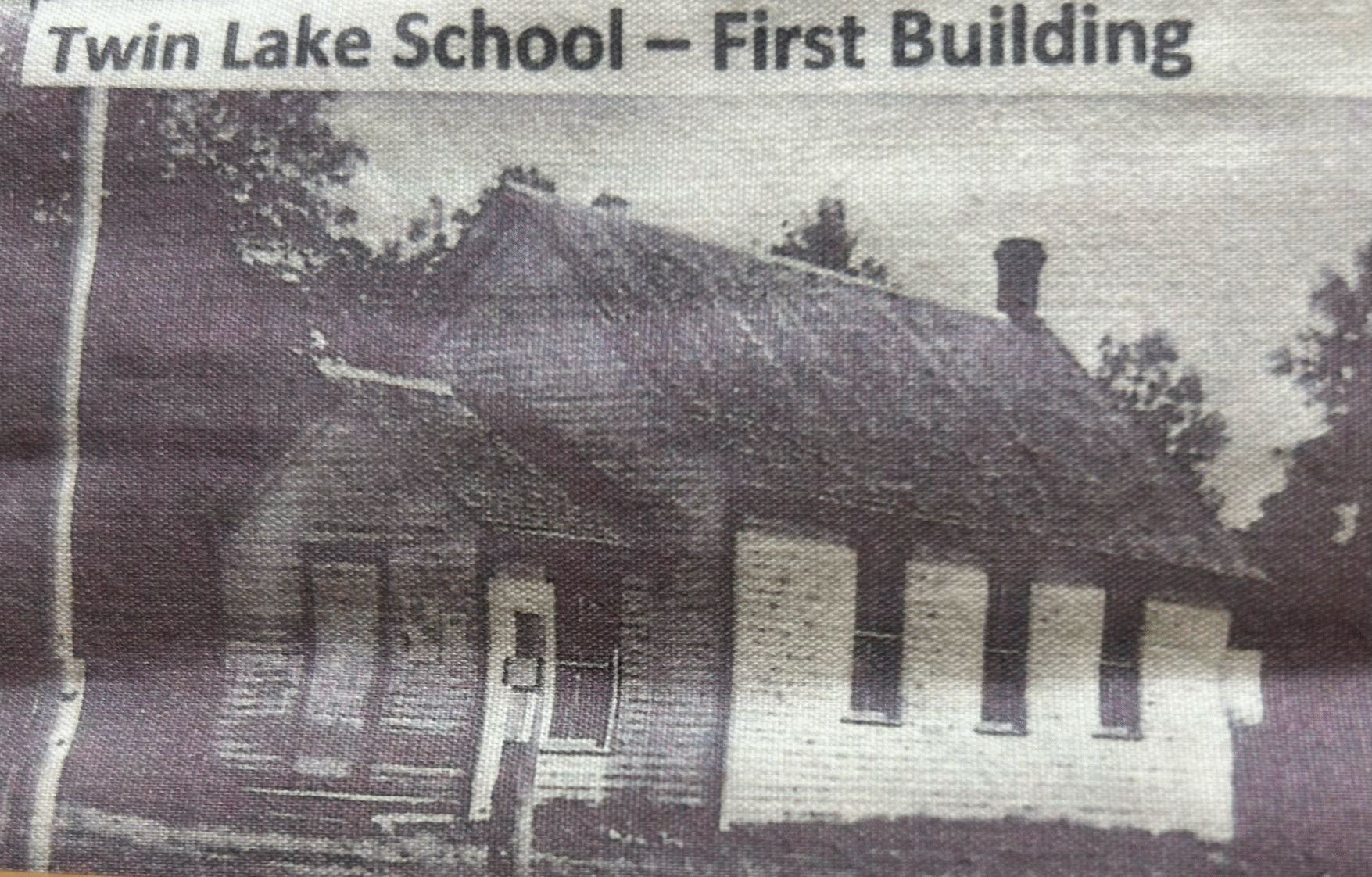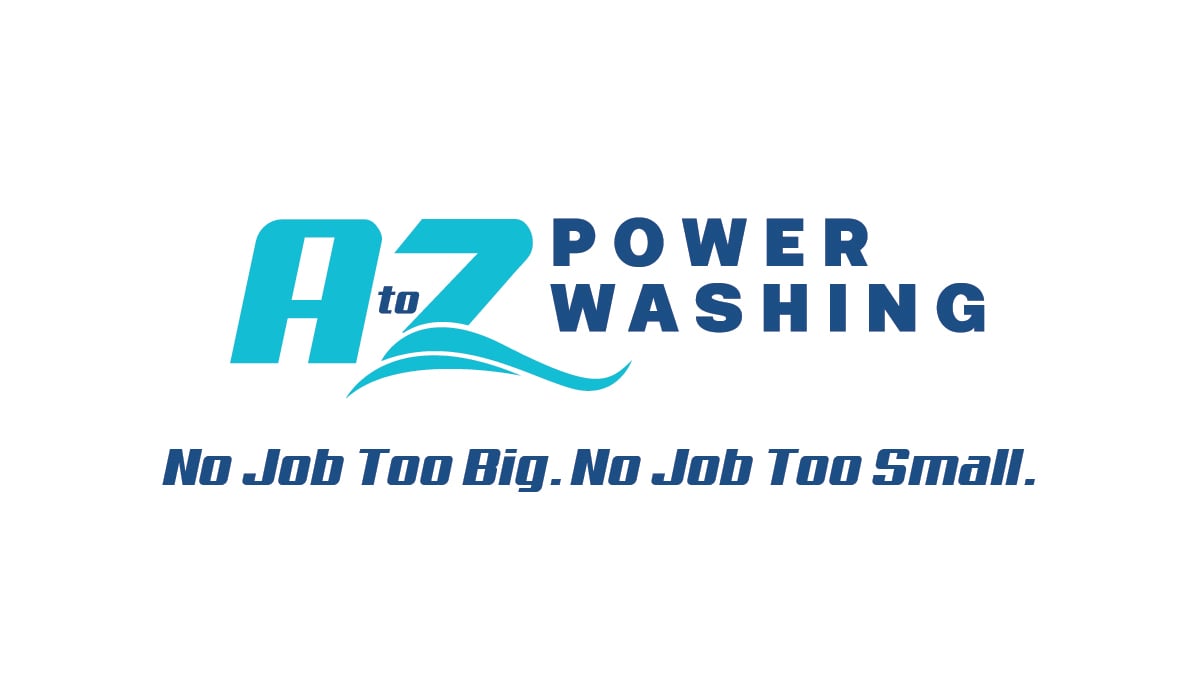News
Town Of Chicog
2025 Hunters Feed Prize winners

In In The News
Washburn County ADRC Articles:
 | Roadways - January, 2026 Chicog-Then and Now for January, 2026 JoAnn Malek
|
Town Brush Site: We will be leaving the site open 24/7 for brush disposal until further notice, but it will be monitored. Sorry for the inconvenience of all the schedule changing.
Help Available
If you need help around the yard either removing snow or cleaning up the yard, contact the Washburn County Unit on Aging. Or you can call Pastor Patrick at the Wesleyan Church in Spooner at  715-635-2768.
715-635-2768.
Email Alerts
The Town Of Chicog has set up an email list to alert residents of Chicog of happenings within our town. If you would like to be added to this list, send your email address to Brian Berg at  bbergchicog@gmail.com.
bbergchicog@gmail.com.
Zoning and Building Permits
Chicog Township is zoned. Zoning laws are enforced through Washburn County. If you plan on building in our township, visit the Zoning Office at the Washburn County courthouse in Shell Lake and make sure everything is in order. Also, keep in mind that building permits are required in Chicog.
Phone Calls
PROTECT AND PRESERVE:
A Plan For the Town of Chicog
Washburn County, WI
Updated and Revised, May 2023
General Direction
The original plan which we are here updating was too long, contained too much and now outdated background material, and too many recommendations and unachievable deadlines. Without jettisoning the original plan, we determined to start over from scratch and produce a simple new plan in a few pages. The updated original remains and serves as a reference for demographic and other data. Recommendations in the new Plan supersede and render invalid recommendations in the original.
Explanation of Goal And Rationale For Planning
Protect and Preserve: Why We Call It “God’s Country”
Here, in the North Country, we are privileged to live in a land that is in almost total contrast to those places in which most people find they must live.
It is a land of forests and yet pristine lakes.
Here we find biodiversity. At night one can hear the bark of the fox, the call of the great horned owl, the singing of the coyotes and, occasionally, one can see a timber wolf. Bears live here alongside us. Countless other animal species enrich our land: otter and osprey, bass and bluegill, the pine family—Reds, Whites, Jacks, and Balsam fir, plus we have Red Oaks, Aspens, Maples, and Birches. The great eagle and the great blue heron are fellow citizens here, as is the little green heron, the Canada Goose, and the Loon. Chipmunks and chattering red squirrels, porcupines, and so many others. The White Tail deer come right up to the cabin. The Town of Chicog is a paradise of biodiversity.
Here one can see the sunlight dancing off the waves, and at night, the Northern Lights. We still have dark skies where we can pick out the stars. We have wild rivers for canoe and kayak trips. On quiet winter nights the bright moon illuminates the bare trees, and we can track the ruffed grouse in the snow.
Here, too, are opportunities for recreation: fishing, water-skiing, pontooning in the evening when the No Wake rule comes into play. Hunting in the fall. Summer picnics and parties. Bird watching. Cross-country skiing, and the mesmerizing spell of sitting on a bucket on the ice and staring down a hole. The pace of life is slower here. Lake Associations watch over the quality of the waters.
This little Town of Chicog, located up in the North Country, is a precious haven in a greater land too busy, too noisy, too over-lit at night. Here recreation means re-creation of our spirits. This is what we want to preserve and protect to the seventh generation and so we offer this comprehensive plan to ensure the quality of life for the present and future.
Why We Plan
Planning is nothing more than looking ahead. As our mothers taught us, “Look before you leap.”
Major changes are already underway including climate deterioration and large-scale campground development among others. We need to be prepared for them.
We plan to better serve our citizens.
We plan to head off unwanted change and to encourage positive change.
We plan in order to be proactive, to meet unwanted problems before they get out of control, rather than being reactive after it’s too late.
We plan to keep the character of our Town “Northwoods.”
We plan to ensure our fishing and hunting rights and opportunities.
We plan to keep our lakes clear and healthy for water sports.
Process and Recommendations
Then Town Chairman, Patrick Wilcox, noted that our Comprehensive Plan was over twenty years old, was too long and as a result had been shelved and neglected. He appointed a Planning Committee to update and revise it. The Committee consisted of the following members.
Scott Pahos
Lori Krings
Wendy Streiff
Brad Harrison
Louis Columbus
Kent Shifferd, Chair
The Committee aimed to produce a concise and more useable plan, of no more than a few pages. The Committee worked for eight months. While the Committee kept elements of the Old Plan, we brought those up to date and then started anew with a SWOT Analysis and finished with 24 recommendations to the Board of Supervisors. These are grouped under seven headings: Energy Efficiency and Independence, Toxics, Biodiversity, Land Use, Invasive Species, Communication and Security. We did not specify deadlines for the initiation or completion of the recommended projects but recommend that Biodiversity and Energy Independence and Efficiency should have high priority.
The Seven General Headings
Recommendations: There are 24 recommendations under the headings of Energy Efficiency and Independence, Toxics, Biodiversity and Pollinator Protection, Land Use, Invasive Species, Communications, and Security. The rationales for these are as follows.
Energy Efficiency and Independence: The various methods suggested here for upgrading the building’s R value will save money and reduce our carbon footprint, as will the solar array. We believe these will have relatively short payback periods. They also show our commitment to doing our part to head off the serious effects of uncontrolled global climate deterioration, which, among other things will likely result in failures of the grid to supply electricity consistently.
Toxics: This is a no brainer. We need to protect our own people as they work in the kitchen and clean the Hall, as well as prevent such materials getting into the environment. Note, we consider plastics and Styrofoam to be toxics.
Biodiversity; Pollinator Protection: Biodiversity is the hallmark of our Northwoods ecosystem and is one of the main reasons people live here and come here for vacations. Biodiversity is in rapid and dangerous decline throughout the world, and it can only be saved place by place. This is our plan to protect the values that make us a unique place and that includes pollinator protection. Over 40 percent of our food supply depends on pollinators which include not only bees but also butterflies and moths. Dragonflies hold down the mosquitoes. As biologists observe, without insects the world would be dramatically different and degraded.
Land Use: The nature, extent and siting of human infrastructure including homes, campgrounds, businesses, parks, roads, etc. directly affect the quality of life and must be coordinated so as to promote the vision of Chicog as a rural, Northwoods community as described in the section, “Preserve and Protect.” Regulation of this infrastructure is designed to protect the common good for this and future generations.
Invasive Species: Our waters are the principle reason people come here for recreation. Zebra Mussels, Eurasian Milfoil, Spiny Water Flea and other invasives ride on boats coming in off the landings.
Communications: In order to provide harmony and information essential to all aspects of the community is essential to open avenues of communication to and from cottagers, the local press, other levels of government and volunteer citizen organizations.
Security: Principally focused on forest fires, this section also contains recommendations to assist volunteer organizations who care for the elderly and others in need.
SWOT ANALYSIS
STRENGTHS
Retired population available for enhancing civic life
Well-organized and effective Town government
Relatively new Town Hall and outbuildings
Emergency services
Volunteer fire department
Local EMTs
Contracted ambulance service
Large group of retired persons available for civic participation
Vital civic life
Walkabout, Angels On Our Shoulders, Firewise, Hunter’s Feed,
Emergency Response Team, etc.
Good road system
CAFO ordinance
No wake ordinance
Brush Depository
Two strong Lake Associations
Low crime rate
WEAKNESSES
Limited by County and State (preemption)
Total reliance on fossil fuels
Understaffed volunteer fire department
Abuse of roads by ATVs
Weak internet access
Little communication between Town government and weekenders
Lack of enforcement powers
Insufficient health and transportation services
Absence of jobs that pay well
Climate Deterioration (no planning)
likelihood of extreme events including forest fires and torrential rains,
loss of wildlife habitat, eutrophication of lakes (algae slimes)
Habitat Deterioration
Light pollution and loss of dark skies, noise pollution, loss of beneficial
roadside ecosystems, wake boats eroding shorelines and endangering other users of the water ways
Inappropriate Development
Industrial-like structures, large “campgrounds”
Aging population
OPPORTUNITIES
Move toward renewable energy (esp. Town buildings)
Encourage pollinators
Garden at Town Hall, creative roadside management
Create a Lake Advisory Committee (as per Town of Minong)
Install more zebra mussel cleaning stations
Create an effective (volunteer) education program on how to live in the North Country (as per Twin Lakes Preservation Association)
Develop a forestry regeneration plan that reflects the trends in climate change
Develop a subdivision ordinance that prohibits developments of high density “campgrounds” on lake shores and elsewhere
THREATS
Exotic invasive species
Japanese knotweed, zebra and quagga mussels, curly leaf pondweed, Eurasian milfoil, spiny water flea,
Light and noise pollution
Climate deterioration including: Increased danger of forest fires
Eutrophication of lakes accelerated leading to algae blooms, loss of fisheries,
Overdevelopment consequent on incomers escaping SW drought extreme
Heat and threats to electric power availability
Toxic chemicals
CAFOs
Loss of roadside berry patches
Loss of fire department
Wake Boats causing erosion and eutrophication
High density park model subdivisions
SPECIFIC RECOMMENDATIONS FOR ACTION
I. ENERGY EFFICIENCY AND INDEPENDENCE
1. Replace all windows with high R-value windows and replace seals around exterior doors.
Time Frame: Fall, 2023
2. Install a ground-based solar array to provide electricity to the Town Hall.[Maintain connection to the grid and maintain the diesel generator as backup.]
Rationale: Saving energy saves money. Enhanced reliability during power outages. Supporting material in Appendix
3. Consider adding an air-lock front entrance.
4. Replace fluorescents in Town Hall with LEDs.
II. TOXICS
1. Inventory and replace toxic cleaning materials and non-biodegradable products including Styrofoam with organics.2. Encourage organic and natural farming.
III. BIODIVERSITY; POLLINATOR PROTECTION
1. Authorize a pollinator garden at the Town cemetery site to be created and maintained by volunteers.2. Authorize purchasing and planting bird-friendly shrubs at Town Hall site. (by volunteers)
3. Alter roadside mowing to encourage pollinators. by either: mowing only after the wildflowers have bloomed, mowing only 6 feet back, mowing only every other year.
4. Investigate a managed growth plan for Town woodlots to increase biodiversity.
IV. LAND USE
1. Consult with Attorney re: enacting a Permitting Agreement governing the permitting of Campgrounds in the Town of Chicog in order to determine what restrictions can be applied to campgrounds. [See one possible proposal at bottom.]
2. Pursue the CAFO ordinance with the County Boards Agricultural Committee.
V. INVASIVE SPECIES
1. Monitor and control invasive species including Buckthorn, Japanese Knotweed, purple loosestrife, etc.https://florence.extension.wisc.edu/files/2017/02/Invasive-Updates-Page.pdf for a complete list.)
2. Establish decontamination stations at all boat landings.
VI. COMMUNICATION
1. Authorize a citizen-based Lakes Committee, made up of representatives of each lake, to keep the Board informed of lake conditions.
2. Replace the Planning Committee with a permanent Planning Commission to oversee implementation of the Plan.
3. Hold Quarterly Saturday listening sessions during cabin season and encourage citizens to use the suggestion box at the front of the building.
4. Make a Board member available upon invitation to attend Lake Association Meetings.
5. Board member to attend County Board meetings.
6. Liaise with the Spooner Advocate Chicog News column (provide meeting minutes and other pertinent information).
7. Create a new refrigerator magnet poster with current emergency numbers and Phone number of the Town Hall and url of Town’s webpage.
VII. SECURITY
1. Publicize the laws regarding fireworks permits.2. Cooperate and facilitate with citizen organizations (e.g., Angels On Our Shoulders, ESG, Firewise, C.AI.S.C.)
3. Improve greater access to public transportation.
4. Maintain fire department in peak readiness.
- - - - - - -
Respectfully submitted June, 2023.
Kent Shifferd, Chair
Louis Columbus
Brad Harrison
Lori Krings
Wendy Streiff
Scott Pahos
Lakes
Information on Township Lakes
The Washburn County Land and Water Conservation Department also has a newly-updated Aquatic Invasive Species (AIS) website (https://storymaps.arcgis.com/stories/3b7b5413c50d48a39d62e48df1df103d). It discusses the main species of concern in Washburn County, mapped areas, controlled areas of some species and watercraft decontamination. More information will be added over time.
Zebra Mussels – Decontamination
We have two decontamination stations in Chicog, (see below) Matthew Lake and Lower McKenzie Lake, and we are required to follow the decontamination law as well as to encourage our visitors with boats to do the same. We need to know the decontamination law for Washburn & Burnett County, which became law earlier this year. The law is, "Boaters are required to decontaminate their boats before entering a water body if a decontamination facility (see the enclosed picture of this decontamination station) is at the landing where boaters are putting in. This may consist of removing the weeds off the boat and doing a high pressure/high heat power wash, bleach wash, or other processes that are indicated by the signage". Please process the weed removal and bleach wash at both of these boat landings with decontamination stations.
You will find the explanation of the bleach wash by reviewing the “Ways to Zap Zebra Mussels” brochure below.
During June 22, 2018, Northwestern Wisconsin Lakes Conference, Dr. Mike McCarthy from the University of MN Research advised us not to move used docks and lifts from another lake into our lakes from May to November. And if you do move this equipment during these months, please make sure to have it power washed with 140 degrees hot water high-pressure washer spray before bringing to the boat landing and dropping it in your lake. He mentioned that they believe that Zebra Mussels do detach from established settings when introduced into new waters.
Keep in mind that Zebra Mussels can live on a boat, lift, or dock out of water for five days in dry weather and up to 30 days in wet weather.
Another report from Dr. Mike McCarthy at the Northwestern Wisconsin Lakes Conference is that "having boat landing inspectors is critical and is effective in keeping the Aquatic Invasive Species out, especially the Zebra Mussels, by doing weed removal and the bleach wash continuously." We need to encourage everyone using our lakes to do the inspection and bleach wash whether an inspector is present or not.
Additional Readings:
 Washburn County Lakes & Rivers Association
Washburn County Lakes & Rivers Association
Links to Other Sites for Zebra Mussel Information
 on this website.
on this website.Zebra Mussel control procedures. Here is a list:
Burnett County: Dave Ferris  715-349-2186 dferris@burnettcounty.org Burnett County Land & Water; Bob Baker
715-349-2186 dferris@burnettcounty.org Burnett County Land & Water; Bob Baker  715-349 8009 robert.w.baker@uwrf.edu
715-349 8009 robert.w.baker@uwrf.edu
Burnett County Lakes & Rivers Association.
Washburn County: Lisa Burns  715-468-4654 lburns@co.washburn.wi.co Washburn County Land & Water; Cathie Erickson
715-468-4654 lburns@co.washburn.wi.co Washburn County Land & Water; Cathie Erickson  715-865-4406 Washburn County Lakes & Rivers Association.
715-865-4406 Washburn County Lakes & Rivers Association.
 715-635-4072; Another ZM DNR personnel - Pamela Toshner
715-635-4072; Another ZM DNR personnel - Pamela Toshner  715-635-4073
715-635-4073US Fish & Wildlife: Dave Wedan 608-783-8435 dave_wedan@fws.gov





